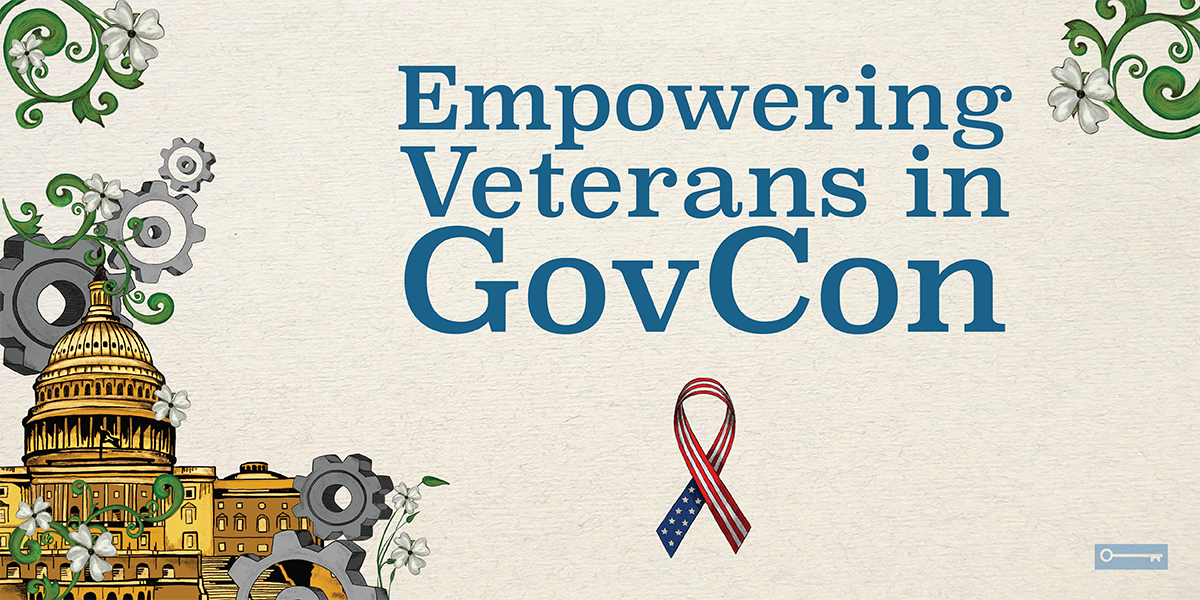Mid-tier contractors are on their own when competing for federal contracts. They lack the set-asides and other legislative supports of small businesses and yet they don't have the depth of resources that large businesses do.
Learn what defines a mid-tier contractor and what's being done to level the playing field.
Guest: Andrew Hunter, Director of the Defense-Industrial Initiatives Group, Center for Strategic and International Studies
Click the orange play button to listen to the episode. You can also listen to the podcast on Apple I-Tunes or Soundcloud.
Read or Download the Interview Transcript:
Ray Thibodeaux: Welcome to Keys to Winning, a podcast where we talk about government contracting topics such as proposal development, business development, win strategies, and more. Keys to Winning produced by AOC Key Solutions, a leading bid and proposal development firm, gives you a chance to learn from leaders and experts in their fields. I'm Raymond Thibodeaux, the host of Keys to Winning.
Ray Thibodeaux: Today we talk about the plight of mid-tier or middle-sized businesses in federal contracting. Mid-tier businesses don't have the set aside contracts and other legislative supports of small businesses and yet they don't have the depth of resources that large businesses do. So, they tend to face more competitive pressure. As a result, they appear to be winning fewer and fewer government contracts. To talk with us about the issue is Andrew Hunter, director of the Defense-Industrial Initiatives Group and senior fellow at International Security Program, the Center for Strategic and International Studies here in Washington D.C. Hi Andrew, thanks for being on the podcast.
Andrew Hunter: Glad to be with you.
Ray Thibodeaux: I really thought that this was a peripheral issue in the federal contracting community, but it turns out that it is a big issue and an issue with growing concerns. I'm glad we're here to talk about it now. Many say the problem starts with a lack of definition for what a mid-tier business is. What do we mean by mid-tier businesses?
Andrew Hunter: Well, there's a variety of ways of defining it. We actually have a working definition that we use for our research, which is actually sort of a negative definition unfortunately, which is to say it's a medium business, it's not a small business and not a large business. We define a large business as one that has more than $3 billion in revenue. So, it keeps the mid-tier at a pretty large number. Obviously, a small business is the largest group, but mid-tier is still a pretty big group of companies. But as you indicate, they simply don't have the structural advantages that big companies do, nor the policy advantages that are allocated to small businesses.
Ray Thibodeaux: We all understand that small businesses create jobs and innovation, but what do mid-sized companies do?
Andrew Hunter: Well, in a perfect world, mid-sized firms is what successful small firms would grow into. And so we would think in a healthy market, growing companies that start out as small businesses would turn into mid-tier businesses. And the advantages that they should hopefully gain as they become mid-tier businesses would be an increase in the scope and scale on the ability to deliver successful outcomes for their customer especially from my perspective for the federal government and Department of Defense customers. So there should be some advantages to being a mid-tier company as opposed to a small company in theory.
Andrew Hunter: In practice, of course it's a little more complex than that. And we do see that a lot of systems, a lot of firms that operate in the small business universe never graduate outside of their small business status, which may be perfectly reasonable if it's a small family owned business that wants to stay small for reasons of ... they like kind of the work that they're doing and don't want to move beyond it. But in a really robust market, you would expect more graduation from the small business ranks into the middle tier than what we see.
Ray Thibodeaux: Yeah. That is odd. And it occurs to me that most of the legislative support for businesses tend to be geared towards small businesses. So there must be some pressure for businesses to stay small.
Andrew Hunter: Yeah. And there's little nothing in the way of a phase out. So once you move beyond the small category, it's just a cutoff where the supports that you previously had disappear and they don't phase out. So I know there's been some discussion about maybe rather than having those supports just end, they would potentially phase out over time. So they'd be a little bit more of a transition.
Ray Thibodeaux: Yeah. Which leads me to this question: We know that the success of small companies in federal contracting is closely tracked by the government. Do mid-size companies have that same level of tracking?
Andrew Hunter: Well, again, sadly I think much like our research where the middle tier companies are defined mostly by them not being some other kinds of company. Most of the tracking is of the same nature, to the extent mid-tier companies or tracked as the default for not small and not large concentrated companies.
Ray Thibodeaux: A 2010 study by your group, Center for Strategic and International Studies, found that mid-tier businesses are winning fewer and fewer contracts even though the dollar amounts are going up. Do you know if that trend has continued?
Andrew Hunter: There has been a continuing trend towards mid-tier companies getting a slightly smaller share of business. Interestingly, some of the most hard hit companies are the companies that are large but are not on the top-tier of defense contractors. So there is a category that's done even worse than than mid-tier companies. And that is the large contractors that aren't among the big five, the industry leaders, Boeing, Lockheed, Northrop Grumman, Raytheon, and General Dynamics. Large companies below that level have actually been hit the hardest. And so, I guess there is something perhaps to the case that the mid-tier companies have a few advantages and one advantage that we think they may have is because they're not quite as big, they may be more nimble in the face of changing market conditions and able to react a little faster as the market moves.
Ray Thibodeaux: Yeah, that is a good point. Chalk one down for mid-tier businesses. You had mentioned some of the companies that are just below the big five in the federal contracting community. Do you consider those mid-tier?
Andrew Hunter: Well, yeah, I guess again, it depends on your definition. But, I would say by most market definitions they're pretty large companies. They're in that category of 3 billion or more annually. And they've actually been hit a bit harder than the middle tier companies. But of course middle tier hasn't done as well as small business. So there's kind of this graduated effect. Small businesses have competed relatively well in the last 10 years, mid-tier, not quite as well. Large companies have really been hit hard and then the big five were hit during the sequence ratio years but have really roared back in the last two years and are doing pretty well right now.
Ray Thibodeaux: Okay. The reason I asked, is it there seems to be a distribution of contractor wars at the very top and at the very bottom. And it seems like a trend that is continuing.
Andrew Hunter: Yeah. Over the last three, four, five years, it's been quite a strong trend that way.
Ray Thibodeaux: How does your study and surveys by other mid-tier business advocates support legislative efforts to give mid-tier firms a boost in the government contracting market?
Andrew Hunter: Well, and the rationale, the justification for putting together programs of support has generally been to try and access innovation. So for example, classically the SBIR program, STTR program exist because the belief is that there are great new ideas coming up from smaller businesses that we simply wouldn't have access to from the biggest companies. In many cases, the biggest companies for very logical reasons, are very tied to current and existing systems. And so there are some disincentives to them possibly to displace their own market advantages. And so you look to other companies to do that. So the case for a middle tier support program, if you want to call it that, I think would be somewhat similar. The goal would be to try and incentivize innovation in the marketplace and potentially some resiliency in the supply chain.
Andrew Hunter: And a lot of these middle tier companies are suppliers in the supply chain to the bigger companies. And so they may have consolidated over time related production lines. One that comes to mind is a company called Esterline that produces chaff, flares and other kinds of expendables used by the air force and the army and the other services. And a company like that probably would be considered a middle tier company in our rankings and by a number of others. But they're critical suppliers in the supply chain of items that if you went to war, you'd absolutely have to have. And so I think the idea of investing in innovation and investing in supply chain resiliency is where I would see some potential support for some kind of effort to make sure that those companies have the market strength they need to be there when we're going to need them in the future.
Ray Thibodeaux: With mid-tier companies representing nearly a third of the US economy, we're not talking about a small group here. Why do they need set asides to compete for federal contracts?
Andrew Hunter: Well, you've seen some early signals. Something that comes to mind is the recent industrial base review that the administration did. It was inter-agency effort. But a big chunk of the work was done out of the Department of Defense, and ultimately Eric Chewning, who's the deputy assistant secretary of defense for industrial policy has been the point man for briefing out the results of their review. And they identified the ... something over 300 vulnerabilities overall in the supply chain that supports national security. And a lot of those, although they've not spoken a great deal in public about what those vulnerabilities are for understandable reasons, a lot of them I think we can surprise they're going to be in middle tier businesses.
Andrew Hunter: And so they've created I think intellectual foundation for a program that might help a number of these companies, certainly individual ones that are associated with the vulnerabilities identified, but possibly a basis for a deeper policy approach to similar type companies even if they may not currently be insignificant trouble. And there were some early activity in this year's defense authorization bill, FYI 19, that gave the Department of Defense Authority to provide some support to those kinds of critical companies. So I think some of the foundation for an effort like this could be there. And the question will be, how do the folks like Eric Chewning and others in the administration who are now leading this effort, how do they exercise those authorities, and our middle tier businesses on their radar screen as they do so?
Ray Thibodeaux: Without those supports, would mid-tier companies face continued pressure to merge or be acquired?
Andrew Hunter: Well, that's very industry dependent. Funny you asked that. We're just completing a study looking at industry consolidation, and we looked at multiple sectors of industry. Obviously we looked most closely at the sectors because of the nature of our work that do business with the Department of Defense. But what we found is that the trend lines really vary by sector, or what do I mean by that? The space sector has actually become less concentrated in recent years. Of course, it's a pretty concentrated sector to begin with, but the trend line there is towards less concentration, I think because of the burgeoning of commercial space and more smaller companies getting into that game, and being able to get into that game.
Andrew Hunter: But what you do see, it's a big uptick in consolidation in the aviation space. So that is potentially a concern. It's gone from being modestly concentrated and pretty sharply in the last few years, towards a more heavily concentrated industry. So that definitely bears watching. Outside of aviation, there doesn't appear to be too many areas of the economy where consolidation is a huge concern. Speaking from a defense perspective, obviously not cutting into sort of the Internet and social media, those kinds of firms. So, it's definitely something worth keeping eye on, but by the measure that the Department of Justice uses, aviation is really the sector that seems to have the biggest concern.
Ray Thibodeaux: Well, thanks Andrew for being on the podcast.
Andrew Hunter: Thank you. I'm so glad I could join you.
Ray Thibodeaux: And we'll close there. I'm Raymond Thibodeaux and this has been Keys to Winning from AOC Key Solutions Incorporated, or KSI, a consulting firm that has helped companies across the country win billions of dollars in federal contracts. Learn more at http://www.aockeysolutions.com or follow us on LinkedIn.
Be sure to subscribe on our website for more podcasts in this series, and thank you for listening.
About Keys to Winning
Keys to Winning is a podcast that shares practical advice for GovCon professionals from industry experts. Topics covered include Proposal Development, Government Contracting, VOSBs, WOSBs, and more. Episodes are 15 minutes or less and are posted bi-weekly on Thursday morning. The podcast is hosted by Raymond Thibodeaux, a Senior Proposal Specialist with AOC Key Solutions.







